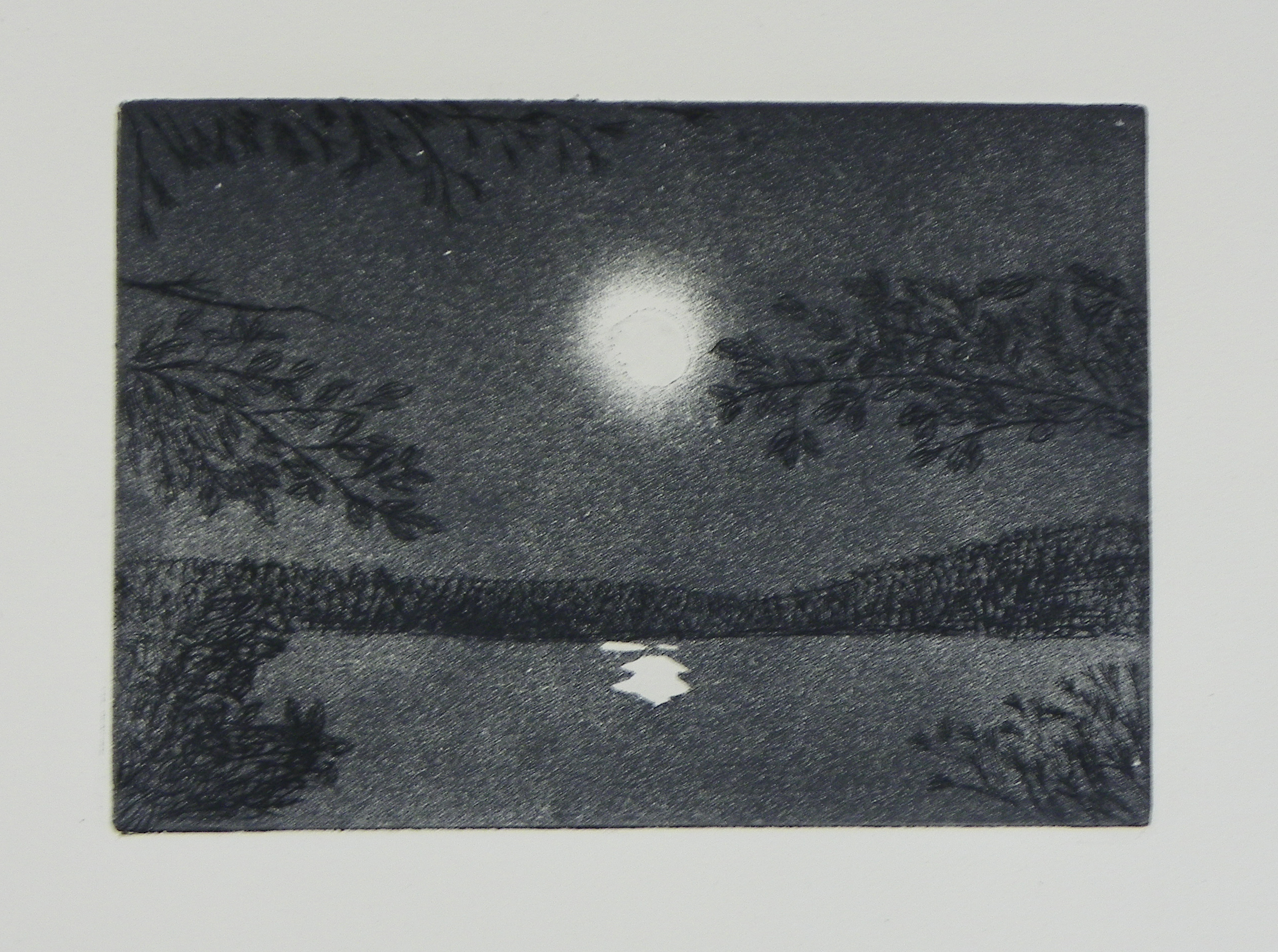ETSY STORE LINK
DajosCorner: Dublin Moon - $50.00
- print size: 6.0 x 7.9 in (15.2 x 20.0 cm)
- paper size: 9.5 x 13.0 in in (24.14 x 33.0 cm)
- paper: BFK Rives (cream)
- limited series: 12
 Menu
Menu
$50 - An etched copper print

This is a traditional etching done on a sheet of copper, using 2 techniques: aquatint and etching. I was driving home one evening through Dublin NH along route 101. Oddly I was coming home from a print making workshop at Zea Mays Printmaking in Florence MA. I was travelling east, the road is curvy as it runs along the edge of Dublin Pond. As I drove around the corner, there was a beautiful full moon rising above the pond. I turned onto a side street and took a picture. This image is based on that picture.
The sky and water was created using a aquatint technique: using an air brush I covered the entire plate with tiny drops of paint. Once dried, the plate is placed into a tank of ferric chloride. The darker areas were etched longer than the lighter area. The moon and the refected areas in the pond were masked out, so no etching would occur in those areas.
The trees and hillside were created by a traditional etch, a resistive material material is applied to a copper plate. I prefer to use Baldwin's Ink Ground (BIG), as it is non-toxic to you and the environment. Once applied and cured, the trees and hillside lines were scratched onto the plate using an etching needle, to expose the underlyng copper. You are not gouging the plate, you are just removing the BIG to expose the copper. Once the desired image is acheived the plate it placed into a tank of ferric chloride.
To produce darker lines, the etching time was around 45 minutes. Once the plate has been etched, the plate is removed from the ferric chloride and the etching is stopped by placing the plate, alternating, in a tray or water and then a tray of a solution of vinegar and salt. This is repeated for a total of 15 minutes. The BIG is removed with citrus based cleaner. The plate is inked, and wiped, leaving just the ink in the etched lines, a piece of pre-soaked and blotted paper is placed on top, and then run through an etching press. The extreme pressure of the press forces the damp paper into the etched lines, thus transferring the ink to the the paper. If you get the desired image, you can start making multiples of the print, if not, repeat the entire process. Reapply the BIG, add more lines, etch, wash, clean, ink, print.